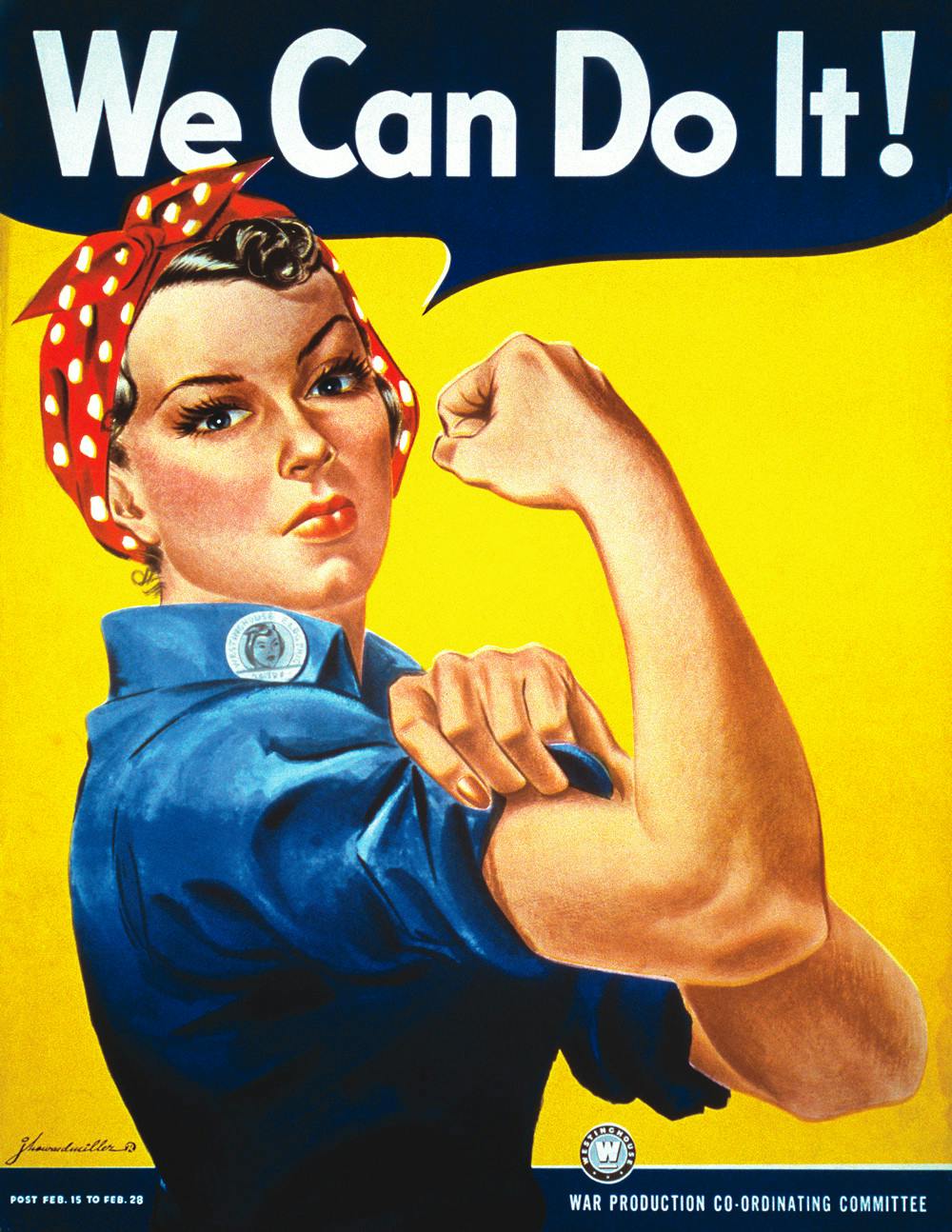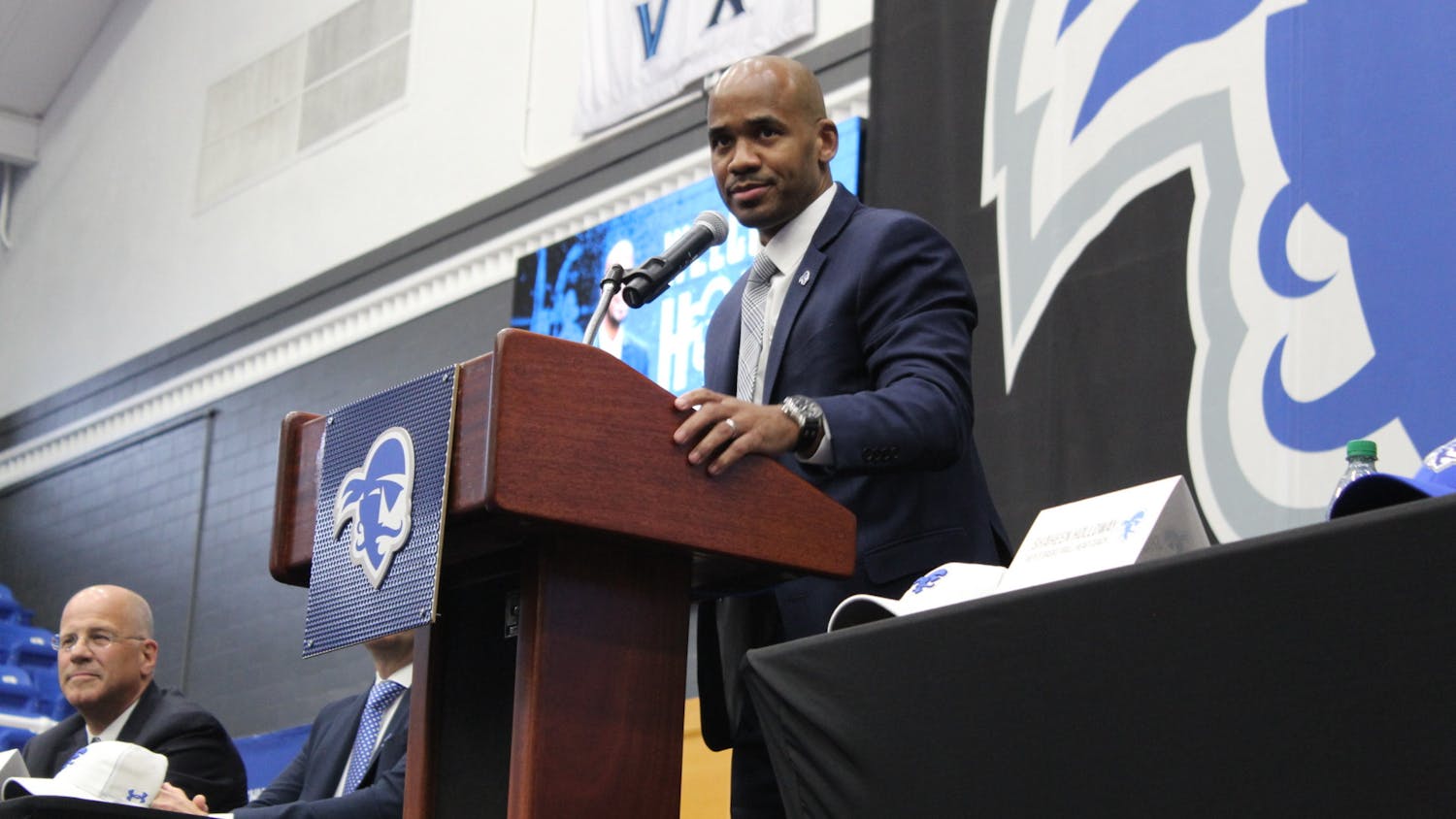‘Who created ‘Rosie the Riveter?’ The famed World War II-era propaganda artwork encouraging women to join the workforce in place of men shipping out to war, and the artist behind the work, is the center of one Seton Hall professor’s recent research.
Dr. James J. Kimble, a communications professor at Seton Hall’s College of Communication and the Arts, pulled back the curtain on the mystery of the artwork to reveal that it was created by J. Howard Miller, a graphic artist from Pittsburgh, Pennsylvania.
Kimble, who teaches classes on persuasive and rhetorical communication, took up an interest in the history and effects of anti-war propaganda when studying for his master’s degree in rhetoric and communication at Kansas State University. Then at the University of Maryland, when studying for his doctorate degree in rhetoric and political culture, Kimble said his proximity to the National Archives was a “natural step” to make his dissertation a historical study about World War II-era propaganda.
“Because there’s just so much more wartime propaganda and discourse and imagery, it is just an endless reservoir of projects,” he said.
As he sought to update his dissertation to include the famous “Rosie the Riveter” poster, he came across an archival book saying how the original Rosie the Riveter work was a misnomer, since the figure became popular through other works by Norman Rockwell. Kimble said he realized it should rather be referred to as the “We Can Do It” poster, as it was part of a series by a single artist out of the Westinghouse Electric Corporation in Pittsburgh. This discovery further drew him into finding out more on the real artist behind the poster.
In a 2006 article he published alongside Dr. Lester Olson of the University of Pittsburgh to deconstruct the misunderstandings of the feminine icon, they stated how the artwork was only posted for two weeks inside the Westinghouse factories before being replaced, so it only gained post-war fame. This led to more research about its origins, such as debunking the belief that Geraldine Hoff Doyle was the inspiratory model, and eventually to discovering more about Miller, this anonymous artist.
“It’s kind of interesting to me that his work, the “We Can Do It” poster, is at least as well-known as the ‘Mona Lisa’ across the world,” Kimble said. “So how is it the case that we know almost nothing about the guy who created it?”
Kimble said he made it his personal goal to find all of the information that he could about Miller while he could, since there are still people alive who knew him, such as his own family. The professor said that Miller and his wife, Mabel Adair McCauley, did not have children, so he had to do his research with the help of more distant relatives, such as Miller’s grandniece, Sarah Acosta Schaffer.
Schaffer was able to uncover Miller’s death certificate for Kimble, which set the record to both his birthdate in 1898 and his death date in 1985, which have commonly been confused with that of another artist named J. Howard Miller. He said he found Schaffer to be a critical aide in discovering the records of Miller’s “anonymous” life.
Schaffer said she recalls vague memories of Miller, her “Uncle Howard” from her early childhood. Her family kept a vast collection of different items he made, both originals and copies of oil paintings, posters, promotional art, and landscapes at their homes.
“At Christmas time, we’d see Uncle Howard’s notecards, or these coasters [in Pittsburgh shops] for sale,” Schaffer said. “So my mom used to always say, ‘There’s Uncle Howard’s things,’ but we already had those things at home.”
When Kimble began publishing his findings in a 2016 Rhetoric and Public Affairs article called, “Rosie's secret identity, or, how to debunk a woozle by walking backward through the forest of visual rhetoric,” correcting the error of Miller’s image, and that of Naomi Parker-Fraley, the true model of his work. His research went viral giving him a glimpse of fame.
“I remember going into class one morning, and my students said, ‘Dr. Kimble, you’ve gone viral!’ ” Kimble said. “And I thought, ‘What?’ And sure enough, the press had gotten a hold of that story.”
When Parker-Fraley passed away in 2018, his statement for her obituary was published in The New York Times. He then received more recognition from the press, where he said he spoke almost nonstop with reporters over the phone for a 24-hour period.
“I don’t think that will ever happen again,” Kimble said. “So it was amazing.”
Kimble’s findings have been a great source of recent pride among the Seton Hall community, especially among the faculty of the College of Communication and the Arts.
Dr. Juergen Heinrichs, a professor of art history at Seton Hall. He said he admired Kimble’s research because of how he went through such painstaking work to finally set the record straight when so many reputable outlets and museums were wrong.
“It’s not just the way in which he rehabilitated the so-called Rosie the Riveter with the real Rosie the Riveter,” Heinrichs said. “He really restored the fame to J. Howard Miller.”
The Smithsonian Institution’s National Museum of American History directly purchased one of Miller’s original “We Can Do It” posters for $75 with his signature on the back four days before he died nearly 40 years ago. However, the Smithsonian did not keep much information on Miller himself as opposed to the actual poster, since his work had yet to achieve direct fame. As confusion sprouted about Miller’s real biography, Heinrichs was able to see the extent and the importance of Kimble’s work.
“It is yet more evidence of reminding us of how careful we should be in doing the work, in digging in and doing the hard labor of archival work, of going to museums, of studying the collections, going to archives, he does it all.” Heinrichs said. “He [Kimble]’s a communications scholar, so he brings great skills in analyzing any form of information and communication, and art history has benefited a great deal from that.”
Kimble said he hopes to create a book out of his six-year research project. The book would take a collection of Miller’s pre-war and war-era artwork found in local Pittsburgh outlets, as well as post-war originals owned by a friend in New York City, to tell a story about Miller’s artistic progression throughout his life. His working title is, An Unlikely Propagandist: The Art and Influence of J. Howard Miller.
Just like how Naomi Parker-Fraley waited several decades to earn her fame from the iconic image based off of herself, Kimble said he made it his mission to give Miller the fair share of the spotlight he deserves. There is still work to be done in giving the proper respect to Miller’s name, but Kimble says he knows that he can do it.





